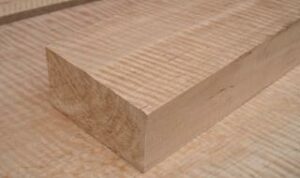Wood furniture is a timeless addition to any interior, but maintaining its beauty requires appropriate finishing products. One such product that has proven effective over time is oil. Oils are natural and versatile, catering to various wood types and applications.
Utilizing oil as a finish offers numerous benefits for your wooden furniture, ensuring an elegant and long-lasting presence in your home.

Applying oil to wood furniture enhances the aesthetic appeal of the piece while protecting against everyday wear and tear. The oil penetrates the wood’s pores, creating a barrier that protects against moisture, stains, and scratches, keeping the wood from absorbing moisture, which can cause warping or susceptibility to mold growth.
In addition to the functional benefits, using oil for your wood furniture allows for personalized finishing touches. With various oils available, you can choose one that complements your wood furniture’s unique character and color, creating a custom look tailored to your taste.
By regularly maintaining and re-oiling your furniture, you preserve its beauty and extend its longevity, ensuring it remains a valuable part of your home for years to come.
Key Takeaways
- Oil enhances the aesthetic appeal and protection of wood furniture
- Specific oils can be selected to personalize finishes based on wood type.
- Regular maintenance with oil prolongs the lifespan and beauty of your wooden furniture
Different Types of Oil for Wood Furniture
1. Linseed Oil
Linseed oil and its variant, cold-pressed flaxseed oil, are popular options. They are essentially the same but differ in extraction and processing methods, with flaxseed oil drying more quickly. These oils offer a warm, amber finish and help preserve your furniture’s life. However, raw linseed oil takes longer to dry than other options, so you must be patient. Alternatively, you can opt for boiled linseed oil, which is easier to work with on exterior wood surfaces.
2. Tung Oil
Pure tung oil originates from the nut of a tung tree. This oil provides a protective and water-resistant finish. With tung oil, your wood furniture will have a slightly golden tint, giving it a rich appearance. It dries slower than other oils, but the best wood oil finishes are often worth waiting for.
3. Danish Oil
Danish oil is a blend of oils and resins that gives wood furniture an attractive satin finish. It is easy to apply and penetrates the wood fibers deeply, providing high protection. Regularly applying Danish oil will help maintain your furniture’s appearance and durability.
4. Teak Oil
Teak oil protects hardwoods such as teak, mahogany, and rosewood. It is formulated to penetrate deep into the wood, preventing drying and cracking. Teak oil will leave a slightly glossy, water-resistant finish that helps to maintain your furniture’s natural beauty.
5. Mineral Oil
Mineral oil is a clear, non-toxic, and affordable option for treating wood furniture. It is easy to apply and helps to keep the wood moisturized, preventing it from drying out and cracking. Also, it does not offer the same level of finish durability as other oils.
6. Polymerized Linseed Oil
Polymerized linseed oil has been modified to provide a faster drying time than traditional linseed oil. It offers a beautiful finish and excellent protection for your wood furniture. This oil type is ideal for those looking for a more efficient option without sacrificing the benefits of linseed oil.
7. Orange Oil
Orange oil is one of the natural oils made from the peel of citrus fruits and offers a pleasant aroma and protection for your wood furniture. It is an eco-friendly option that cleans, polishes and protects the wood. However, it may not provide the same level of durability as other oils.
When choosing the right oil for your wood furniture, consider factors such as drying time, finish, and protection level. Each oil type has unique properties and benefits that cater to different needs and preferences.
How Oil Enhances the Wood’s Aesthetics

Enhancing the Color
Using oil on your furniture can improve its color and highlight the natural grain, deepening contrasts and enhancing visual appeal.
Improving the Finish
A good quality oil finish provides multiple benefits to your furniture, such as improving its resistance to moisture, dirt, and regular wear and tear. Applying oil to your wooden furniture protects the surface and maintains its appearance for years to come. The oil is a barrier against elements that can cause damage, ensuring your furniture remains pristine.
Benefit of Sheen
Oiling wood furniture enhances its sheen, adding a subtle yet elegant shine to the surface. This satin finish showcases the natural patina of solid wood, enriching its appearance without making it overly glossy. The result is a refined and polished-looking piece of furniture that captures and reflects light delightfully, adding depth and elegance to your home.
By using oil as recommended, you can maintain and enhance your furniture’s natural beauty and structural integrity.
Protection Offered by Oil Finishes
● Prevention of Dents and Scratches
Applying an oil finish to your wood furniture can help protect it against dents and scratches. Oils such as linseed oil saturate deep into the wood grain, creating a barrier against daily wear and tear. This helps maintain the natural beauty and strength of your wooden surfaces.
● Resistance to Water and Chemicals
Oil finishes provide physical protection and offer resistance to water and chemicals. Wood is naturally porous, so water can often cause damage or warping over time. An oil finish creates a barrier on the surface, effectively making your furniture water-resistant. This also protects against household chemicals that might otherwise harm the wood.
● Protection Against Pests
Another benefit of using oil finishes on your wood furniture is that they can deter pests, such as wood-boring insects. Certain oils, like tung oil, have natural insect-repellent properties. Regularly applying an oil finish can help keep your furniture free of pests and prolong its lifespan.
● Reduction in Mildew Growth
An added advantage of oil finishes is their ability to reduce mildew growth. Mildew can develop in damp or humid environments; untreated wood is particularly susceptible to this damage. Oil finishes can help prevent mildew by creating a barrier that stops moisture from infiltrating the wood. This not only preserves the appearance of your furniture but also contributes to a healthier indoor environment.
To sum up, oil finishes offer multiple layers of protection for your wood furniture, such as preventing dents and scratches, providing resistance against water and chemicals, deterring pests, and reducing mildew growth. Applying oil finishes to your regular maintenance routine can help keep your wood furniture looking and performing its best for years.
Usage of Oil on Various Wooden Items
Caring for your wooden items by using oil can significantly enhance their lifespan and appearance. This section will discuss the benefits of applying oil on various wooden items, such as floors, kitchen countertops, utensils, tables, cutting boards, and butcher blocks.
Oil for Wooden Floors
When it comes to wooden floors, oil can restore their luster and provide a protective barrier against wear and tear. Linseed oil, for instance, penetrates deep into the wood grain, safeguarding against scratches and humidity changes. To maintain your wooden floors, apply oil periodically and follow the manufacturer’s recommendations on the frequency of application.
Oil for Kitchen Countertops and Utensils
Wooden kitchen countertops and utensils like bowls and spoons also benefit from oil applications. Mineral or food-grade oil forms a protective barrier that reduces staining and water damage. It is essential to ensure the oil is safe for food contact, as it will directly contact your food items. If you need more clarification, always consult the manufacturer or research the oil you are considering.
Oil for Wooden Tables
Wooden tables can also benefit from oil applications. Regular oiling can keep the table surface smooth and well-protected from moisture and stains. Avoid applying oil on painted or lacquered surfaces, as oil may damage the finish. Choose an oil that suits your table’s wood type, such as tung or Danish, and always follow the manufacturer’s instructions when applying the oil.
Oil for Cutting Boards and Butcher Blocks
Cutting boards and butcher blocks require special care, as they are used for food preparation. Food-grade mineral oil is ideal for these items, as it helps prevent cracking, warping, and bacterial growth. Apply the oil at least once a month or when the surface appears dry. To maintain your cutting boards and butcher blocks, always clean and sanitize them properly before and after use, and store them in a dry place.
Remember to follow the recommended oil application and maintenance guidelines to prolong the life of your wooden items and ensure their continued functionality and beauty.
Advantages of Using Oil for Wood Furniture

When considering oil finishes for your wood furniture, it’s essential to know the benefits to determine if it’s the right choice for your specific needs.
- Oil-based finishes penetrate the wood deeply, which helps replenish lost moisture and revitalize dried wood. This effect also protects against aging and daily wear and tear.
- The natural characteristics of wood oils make them a perfect choice for raw wood surfaces or as a top coat for items covered in milk paint.
- Some oils, such as lemon oil, offer additional benefits, such as cleaning the wood surface and removing stains, grease, and dust buildup. They also leave a pleasant aroma and protect against moisture.
- Wood oils are typically non-toxic and offer a safer alternative to other finishes, such as lacquer or varnish.
Frequently Asked Questions
1. Will wood oil make furniture last longer?
Wood oil creates a protective barrier on the furniture, safeguarding it from water damage, heat, and sunlight exposure. This helps prevent the wood’s warping, cracking, and fading over time, prolonging the furniture’s lifespan and keeping it looking beautiful.
2. Is it better to oil or varnish wood?
Oiling and varnishing both have their benefits, but oil provides more flexibility. Unlike varnish, which forms a hard, glossy coating on the wood surface, the oil penetrates and nourishes the wood fibers, allowing them to breathe and move naturally. This results in a more natural-looking, matte finish compared to the high-gloss finish of varnish.
3. Which oils should I choose for indoor furniture?
For indoor furniture, walnut oil is an excellent option. It is a natural product that does not contain any chemicals or toxins, making it safe for your home. It also protects the wood from damage caused by water, heat, or sunlight and helps repair minor damage like scratches and dents.
4. Does using oil on wood furniture prevent it from going rancid?
No, oil on wood furniture does not cause it to go rancid. When appropriately applied, the oil forms a protective barrier on the surface of the wood, improving its durability and resistance to damage. It does not, however, lock in moisture or cause the wood to decay.
5. What oil should I use for exterior wood furniture?
Teak oil is a top choice for treating outdoor wood furniture. It is specifically formulated to protect against harsh environmental factors like prolonged exposure to water, sunlight, and temperature fluctuations. It would be best if you considered reapplying teak oil 1-2 times a year to keep your outdoor furniture looking its best.






